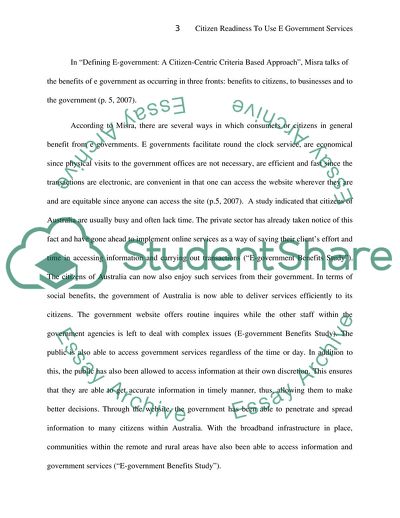Cite this document
(Citizen Readiness to Use E-Government Services Research Proposal Example | Topics and Well Written Essays - 3000 words, n.d.)
Citizen Readiness to Use E-Government Services Research Proposal Example | Topics and Well Written Essays - 3000 words. https://studentshare.org/information-technology/1778046-citizen-readiness-to-use-e-government-services
Citizen Readiness to Use E-Government Services Research Proposal Example | Topics and Well Written Essays - 3000 words. https://studentshare.org/information-technology/1778046-citizen-readiness-to-use-e-government-services
(Citizen Readiness to Use E-Government Services Research Proposal Example | Topics and Well Written Essays - 3000 Words)
Citizen Readiness to Use E-Government Services Research Proposal Example | Topics and Well Written Essays - 3000 Words. https://studentshare.org/information-technology/1778046-citizen-readiness-to-use-e-government-services.
Citizen Readiness to Use E-Government Services Research Proposal Example | Topics and Well Written Essays - 3000 Words. https://studentshare.org/information-technology/1778046-citizen-readiness-to-use-e-government-services.
“Citizen Readiness to Use E-Government Services Research Proposal Example | Topics and Well Written Essays - 3000 Words”. https://studentshare.org/information-technology/1778046-citizen-readiness-to-use-e-government-services.


